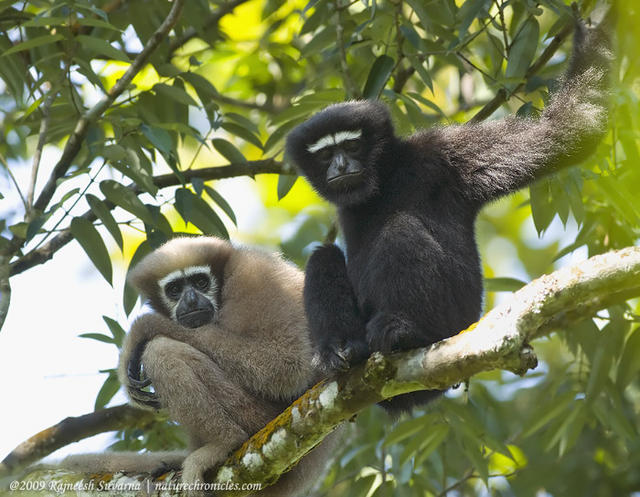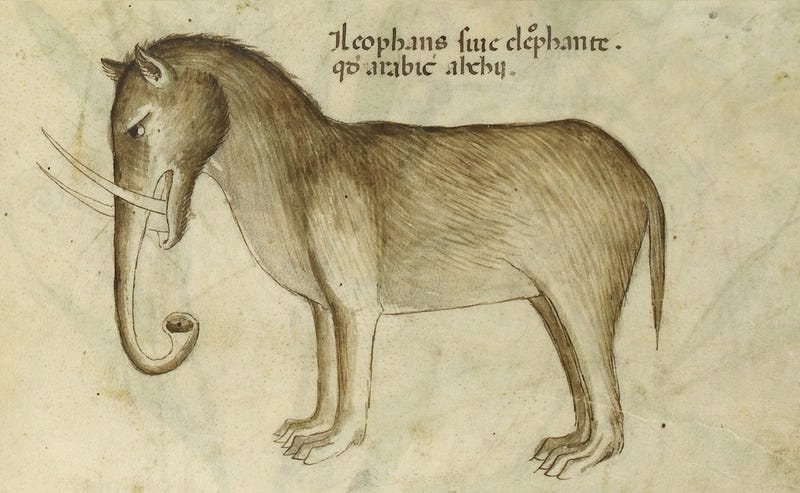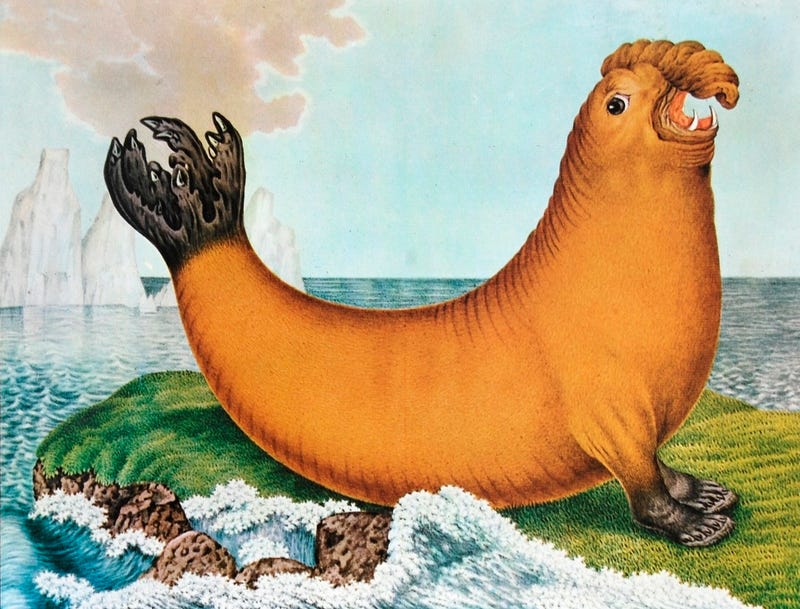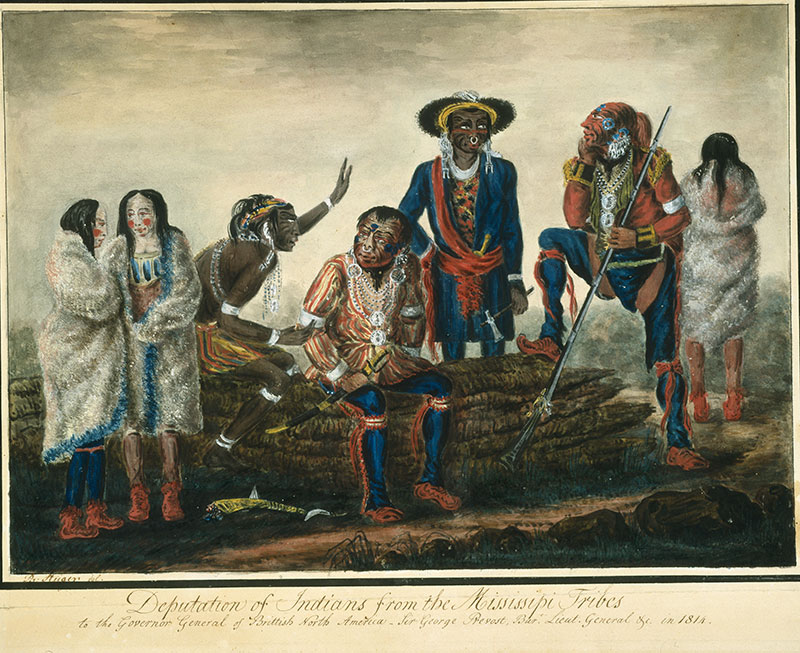Everythingg
King-Over-Kingz
They painted those pictures you keep referring to so that's false.......
You want to make it about everything except what those people would be classified as today going by their appearance. I know why though

They painted those pictures you keep referring to so that's false.......

So now the narrative is that they "misdrew" the natives
"Hey here are bad pictures (subjective btw) so the pictures you have are just also bad" is not a good argument as to why the aboriginals did NOT look as they were portrayed.
The argument is that they didn't know what the fukk they were drawing.
How does the average two-bit European artist in the 17th century know how to draw facial features and skin color of every ethnic group from across the world? It's not like the guy who made that map had personally traveled to Asia, Africa, South America, and North America. They were given some descriptions and drew some shyt. Probably saw someone showing off a black slave and said, "Okay, I haven't seen an American but I'll start with the African and then just shift it a little based on the description." The same way they did with the animals, drawing a sloth that looks like an altered monkey or a walrus that looks like an altered seal.
And even if they had traveled there, how did they tell the difference between legit natives and Black Africans who had already gotten there 100 years earlier, and mixes? By the 1700s Hispanola and some other Caribbean islands already had far more Africans on them than natives, as did parts of Belize and South America too.
Those pictures are too close to the real thing to help your argument








Records of contacts between Africans and Native Americans date back to April 1502, when the first enslaved African arrived in Hispaniola. Some Africans escaped inland from the colony of Santo Domingo; those who survived and joined with the natives became the first circle of Black Indians.[8][9] In the lands which later became part of the United States of America, the first recorded example of an African slave escaping from European colonists and being absorbed by Native Americans dates to 1526. In June of that year, Lucas Vasquez de Ayllón established a Spanish colony near the mouth of the Pee Dee River in present-day South Carolina. The Spanish settlement was named San Miguel de Gualdape; its inhabitants included 100 enslaved Africans. In 1526 the first enslaved African fled the colony and took refuge with local Native Americans.[9]
Pueblo peoples had contact with the Moroccan slave Esteban de Dorantes in 1534 before any European contact. As part of the Spanish Pánfilo de Narváez expedition, Esteban traveled from Florida in 1528 to what is now New Mexico in 1539, when he is thought have been killed by Zunis.[10]
Intermarriage between enslaved African and Native Americans began in the early 17th century in the coastal settlements[which?].[11] In 1622 Native Americans attempted to overrun the European colony of Jamestown. They killed the Europeans but brought the African slaves as captives back to their own communities, gradually integrating them.[12] Interracial relationships occurred between African Americans and members of other tribes in the coastal states.[11] Several colonial advertisements for runaway slaves made direct reference to the connections which Africans had in Native American communities. "Reward notices in colonial newspapers now told of African slaves who 'ran off with his Indian wife' or 'had kin among the Indians' or is 'part-Indian and speaks their language good.'"[13][14]
Colonists in South Carolina felt so concerned about the possible threat posed by the mixed African and Native American population (arising due to runaways) that they passed a new law in 1725. This law stipulated a fine of 200 pounds for persons bringing a slave to the frontier regions. In 1751 South Carolina passed a law against holding Africans in proximity to Native Americans, which was deemed[by whom?] detrimental to the security of the colony. South Carolina under Governor James Glen (in office 1743-1756) promoted an official policy that aimed to create in Native Americans an "aversion" to African Americans in an attempt to thwart possible alliances between them.[15][16]
In 1726 the British governor of colonial New York exacted a promise from the Iroquois Confederacy to return all runaway slaves. He required the same from the Huron tribe in 1764 and from the Delaware tribe in 1765.[12] Despite their agreements, the tribes never returned any escaped slaves[12] - they continued to provide a safe refuge for escapees. In 1763, during Pontiac's War, a Detroit resident reported that Native Americans killed whites but were "saving and caressing all the Negroes they take". He worried lest this might "produce an insurrection". Chief Joseph Brant's Mohawk in New York welcomed runaway slaves and encouraged adoption of them into the tribe and intermarriage.[12] The Native American adoption systems knew no color line.[12] Carter G. Woodson's notion of an escape hatch from slavery proved correct: Native American villages welcomed fugitive slaves and some served as stations on the Underground Railroad.[12]
The argument is that they didn't know what the fukk they were drawing.
How does the average two-bit European artist in the 17th century know how to draw facial features and skin color of every ethnic group from across the world? It's not like the guy who made that map had personally traveled to Asia, Africa, South America, and North America. They were given some descriptions and drew some shyt. Probably saw someone showing off a black slave and said, "Okay, I haven't seen an American but I'll start with the African and then just shift it a little based on the description." The same way they did with the animals, drawing a sloth that looks like an altered monkey or a walrus that looks like an altered seal.
And even if they had traveled there, how did they tell the difference between legit natives and Black Africans who had already gotten there 100 years earlier, and mixes? By the 1700s Hispanola and some other Caribbean islands already had far more Africans on them than natives, as did parts of Belize and South America too.

"How could they tell the difference between natives and Africans". If you have to ask this, then you're supporting the premise of this thread. This thread says that there were aboriginals that looked "African". The pictures support this..

This is the west indies. Clearly black and clearly not slaves as they are negotiating and the Euros have disarmed themselves. If you want to deny the reality of "black" people being here before cacs, you have to do better than "here are some bad pics so no depiction is accurate"..


The Jamaican Maroons are descendants of maroons, Africans who escaped from slavery on the island of Jamaica and established free communities in the mountainous interior, primarily in the eastern parishes. African slaves imported during the Spanish period likely were the first to develop such refugee communities.
The English expanded the importation of slaves to support their extensive development of sugar cane plantations. Africans in Jamaica continually fought and revolted, with many who escaped becoming Maroon. The revolts had the effect of disrupting the sugar economy in Jamaica and making it less profitable. The revolts simmered down only after the British government promised to free the slaves if they stopped revolting; it abolished slavery in 1834.
The Windward Maroons and those from the Cockpit Country resisted conquest in the First Maroon War, which the government ended in 1738-1739 by making treaties to grant lands and to respect their autonomy, in exchange for peace and aiding the colonial militia if needed against external enemies. Tensions between British colonial Governor and the residents of Trelawny town resulted in the Second Maroon War from 1795-1796. Although the governor promised leniency if men surrendered, the Assembly insisted on deportation of 600 Maroons to British settlements at Nova Scotia. After Freetown was established in West Africa as a British colony in 1792 (present-day Sierra Leone), the British deported additional Maroons fearing slave rebellion on Jamaica.
When the British captured Jamaica in 1655, the Spanish colonists fled. Many of their slaves escaped and, together with free blacks and mulattoes, former slaves, and some native Taíno[2] coalesced into several heterogenous groups in the Jamaican interior.
Some created palenques,, or stockaded mountain farms at Lluidas Vale in modern-day St Catharine Parish under Juan de Bolas (or Lubolo). Toward the western end of Cockpit Country were the ‘Varmahaly Negroes’ under the leadership of Juan de Serras; a third group was active in the region of Porus, in modern Manchester Parish; and there was possibly a fourth in the Blue Mountains. During the first decade of British rule, these groups were active on behalf of the Spanish. But, as it became increasingly obvious that the British would hold their conquest, they changed their position.
Faced with discovery and defeat in 1659, Juan de Bolas allied with the British and guided their troops on a raid which resulted in the final expulsion of the Spanish in 1660. In exchange, in 1663, Governor Lyttleton signed the first maroon treaty, granting de Bolas and his people land on the same terms as British settlers.
The other maroon groups remained independent in the mountainous interior of Jamaica, surviving by subsistence farming and periodic raids of plantations. These initial maroon groups dwindled, migrating or merging with settlers. Others may have coalesced to form the nucleus of what would later be called the Windward Maroons. Over time, runaway slaves increased the Maroon population, which eventually came to control large areas of the Jamaican mountainous interior.
Establishment of the Leeward and Windward Maroons
Between 1673 and 1690 there were several major slave uprisings, mainly prompted by newly arrived, highly militarized Coromantee groups from the Asante Empire. On 31 July 1690, a rebellion involving 500 slaves from the Sutton estate in Clarendon Parish led to the formation of Jamaica’s most stable and best organized Maroon group. Although some were killed, recaptured or surrendered, more than 200, including women and children, remained free after the rebellion was considered over.
They established an Ashanti-style polity based in the eastern Cockpit Country, notably Trelawny Town; their most famous ruler was Cudjoe. They incorporated outsiders only after newcomers had satisfied a strict probationary period. Another Jamaican maroon leader was Major Jarrett.
The Windward Maroons, in the wilder parts of eastern Jamaica, were always composed of separate highly mobile and culturally heterogeneous groups. From early on, the Jamaican governors considered their settlements to impede British development of the interior. They ordered raids on the Maroon settlements in 1686 and 1702, to little effect.
By about 1720, a stronger Windward community had developed around the culturally Africanised group of three villages known as Nanny Town, under the spiritual leadership of Queen Nanny, an Ashanti woman, sometimes in allegiance and sometimes in competition with other Windward groups. She was known for her exceptional leadership skills, especially in guerrilla warfare during the First Maroon War. One tactic particular to the Jamaican Maroons involved the art of camouflage using plants. Her remains are reputedly buried at "Bump Grave" in Moore Town, the main town of the Windward Maroons, who are concentrated in and around the Rio Grande valley in the northeastern parish of Portland. Queen Nanny, also known as Granny Nanny (died 1700s), is the only woman honored as one of Jamaica's National Heroes. She has been immortalised in songs and legends.
First Maroon War 1731-1739
Disturbed by plantation raiding, the colonial authorities of Jamaica wanted to eradicate the maroon communities in order to promote British settlement. Their strategy, beginning in the 1730s, was to break off lines of communication between the Windward and Leeward Maroons, then first pick off the less organized Windward Maroons. In practice, the Maroon troops’ command of the territory and skill in guerrilla warfare gave them a strong advantage over colonial forces.
After much fighting, the British took and destroyed Nanny Town in 1734, but most of the Windward Maroons simply dispersed and formed new settlements. At this point, however, fighting shifted to Leeward, where the British troops had equally limited success against the well-trained and organized forces of Cudjoe.
By the mid-1730s, warfare was proving costly to Maroons and British alike and was turning into an ongoing stalemate. Cudjoe rejected suggestions of a treaty in 1734 and 1736, but by 1738 he agreed to parley with John Guthrie. This local planter and militia officer was known to and respected by the Maroons. The treaty signed under British governor Edward Trelawny granted Cudjoe’s Maroons 1500 acres of land between their strongholds of Trelawny Town and Accompong in the Cockpits and a certain amount of political autonomy and economic freedoms, in return for which the Maroons were to provide military support in case of invasion or rebellion, and to return runaway slaves in exchange for a bounty of two dollars each. This last clause in the treaty caused tension between the maroons and the enslaved black population, although from time to time runaways from the plantations still found their way into maroon settlements.
In addition, a British superintendent was to be assigned to live in each maroon town. After a few more years of fighting, similar treaties were signed by Quao, Nanny, and other major leaders of the Windward Maroons. They eventually became settled at Charles Town, Scotts Hall and the new Nanny Town (now called Moore Town).
Intervention in Tacky's War 1760
In April 1760, the Jamaican government called upon the maroons to honor their treaties and come to their assistance during the major slave uprising led by the Fante leader, Tacky. The Windward Maroons were first to be mobilized. Their intervention often appeared half-hearted: the Scott's Hall Maroons began by claiming outstanding arrears in bounty, while those of Down's Cove simply took cover when attacked by the rebels. In the end, it was a Scott's Hall Maroon, Lieutenant Davy, who killed Tacky during a skirmish. Although the loss of Tacky's leadership essentially ended the rebellion, by October, related uprisings broke out on the leeward side of the island. Cudjoe's well-trained forces were also mobilized to help deal with them, apparently to good effect.
Second Maroon War 1795-1796
The Second Maroon War began in 1795 against the background of the British Jamaican plantocracy panicked by the excesses of French Revolution, and by the corresponding start of a slave revolt in neighboring Saint-Domingue, which ended with the independence of Haiti in 1804.. At the same time, an increasing hunger for land among expanding maroon communities in Jamaica coincided with several more immediate and proximate causes of grievance among the maroons of Trelawny Town.
The treaties following the First Maroon War had called for the assignment of a white ‘superintendent’ in each maroon community. Trelawny had objected to the official recently assigned to them and eventually expelled him. At this, the new, hardline Governor, Balcarres, marched on Trelawny with a military force to demand their immediate submission. The Trelawny Maroons chose to fight and were initially successful, fighting a guerrilla war in small bands under several captains, of whom the most noted were Johnson, Parkinson and Palmer. Balcarres’ general, George Walpole, opted to besiege the Cockpit Country on a massive scale, surrounding it with watchposts, firing in shells from a long distance, and intending to destroy or cut off all maroon provision grounds. Meanwhile, maroon attempts to recruit plantation slaves met with a mixed response, and other maroon communities maintained neutrality.
Despite signs that the siege was working, Balcarres grew impatient and sent to Cuba for a hundred hunting dogs and handlers. The reputation of these was so fearsome that their arrival quickly prompted the surrender of the majority of Trelawny forces. To Walpole's dismay, Balcarres refused to treat with the defeated maroons and had them deported from Jamaica, at first to Nova Scotia, then to the new British colony of Sierra Leone, and joined the ‘African American founders’ who established the Colony of Sierra Leone and the settlement of Freetown, Sierra Leone. From the 1830s on some Maroons (or their descendents) returned to Jamaica to work as free laborers (although many of these returnees resettled in Sierra Leone) (see Jamaican Maroons in Sierra Leone) or formed the new Creole ethnic group of Sierra Leone which established diaspora communities along the West African shores from Sierra Leone to the Gambia to Fernando Pó.
Most of this talk of African Americans being the real natives all traces back mainly to biracials and tri-racials passing or attempting to pass as native or other for social and economic benefit.Uh, hadn't Africans already been enslaved in the Americas for generations when these drawings were made? We're talking the late 1700s here - for all you know those are ACTUAL recent slave descendants from Africa in the pictures. Or mixed. Why just assume they were OG natives? How would some random European know the difference?
And 17th/18th century CAC artwork ain't really a strong go-to source for accurate depictions. Ya'all can't figure out subtle racial features or skin tone from a fukking old-school European artist - dem dudes were NOT balling with the accuracy like that.
This is what they thought sloths looked like:


Hyena


Walrus


Hippopotamus


Hoolock Gibbons


A bit older (1300s)....an elephant


Elephant seal


90% of the time when they were drawing shyt from the "New World" or Africa they didn't know what the fukk they were drawing. I'm sympathetic to some of the evidence that West Africans visited Central America/Caribbean...but this is NOT it.
Everythingg said:You want to make it about everything except what those people would be classified as today


im_sleep said:Most of this talk of African Americans being the real natives all traces back mainly to biracials and tri-racials passing or attempting to pass as native or other for social and economic benefit.

In 1976, Ivan Van Sertima proposed that New World civilizations were strongly influenced by diffusion from Africa. The first and most important contact, he argued, was between Nubians and Olmecs in 700 B.C., and it was followed by other contacts from Mall in A.D. 1300. This theory has spread widely in the African-American community, both lay and scholarly, but it has never been evaluated at length by Mesoamericanists. This article shows the proposal to be devoid of any foundation. First, no genuine African artifact has ever been found in a controlled archaeological excavation in the New World. The presence of African-origin plants such as the bottle gourd (Lagenaria siceraria) or of African genes in New World cotton (Gossypium hirsutum) shows that there was contact between the Old World and the New, but this contact occurred too long ago to have involved any human agency and is irrelevant to Egyptian-Olmec contact. The colossal Olmec heads, which resemble a stereotypical ''Negroid,'' were carved hundreds of years before the arrival of the presumed models. Additionally, Nubians, who come from a desert environment and have long, high noses, do not resemble their supposed ''portraits.'' Claims for the diffusion of pyramid building and mummification are also fallacious.

I know, where on the same page here. Ivan Van Sertima's theories were used to further justify a false idealogy that predated his material.Nah, it all goes back to this........

Which was completely refuted here:
http://www.unl.edu/rhames/courses/current/vansertima.pdf
.............and here:
Robbing Native American Cultures: Van Sertima's Afrocentricity and the Olmecs (PDF Download Available)
This 'theory' hasn't had ANY weight since 1997. It is now 2017 and people STILL perpetuate this myth and do the same thing to the Native Americans that they say 'White' people did to us.
That's easy.........

They'd be classified as 'American Indian'..................not 'Black'.......................


Are you kidding?
Those are Jamaican maroons. That's Augustin Brunias's famous 18th-century painting, "Pacification with the maroon negroes in the island of Jamaica." They were escaped slaves who formed their own colony on Jamaica.
You posting these out-of-context paintings like they part of some big mystery when we know EXACTLY who those people were and where they came from.
Jamaican Maroons - Wikipedia






Nah I think it stems from Black Americans clawing for a homeland. People with a platform prey on the fact that we are not connected to our ancestral land or culture. Even a Ancestry DNA test ain't gonna get you what you really want in the end. And often times the W.Africans don't like us taking up their causes out of the blue like that anyways.Most of this talk of African Americans being the real natives all traces back mainly to biracials and tri-racials passing or attempting to pass as native or other for social and economic benefit.